access to a mobile phone
description: availability and use of mobile phone technology
19 results

Seasteading: How Floating Nations Will Restore the Environment, Enrich the Poor, Cure the Sick, and Liberate Humanity From Politicians
by
Joe Quirk
and
Patri Friedman
Published 21 Mar 2017
Mobile phones started out expensive—a sign of status for rich people only. In 1996 the Motorola StarTAC cost $1,000, and activists complained that the poor were exploited to build them. Today the poor are talking on them. By 2020, 90 percent of the world’s population over the age of six will have access to a mobile phone. Not too long ago, laptops were only for rich people. Now we have solar-powered XO laptops distributed for free to 2.5 million poor children in Africa by the nonprofit One Laptop per Child in partnership with Fruit Roll-Ups. Whether it’s soap, sneakers, cotton, clothes, or cars, most technologies follow the same trend from unique to ubiquitous.
…
“the International Transport Workers’ Federation (ITF) claims it recovers tens of millions US in unpaid wages”: International Transport Workers’ Federation, “ITF Reveals MLC Experiences to International Shipping Conference,” press release, September 9, 2015, www.itfglobal.org/en/news-events/press-releases/2015/september/itf-reveals-mlc-experiences-to-international-shipping-conference. “By 2020, 90 percent of the world’s population over the age of six will have access to a mobile phone.”: Ben Woods, “By 2020, 90% of World’s Population Aged over 6 Will Have a Mobile Phone: Report,” The Next Web, accessed April 21, 2016, http://thenextweb.com/insider/2014/11/18/2020-90-worlds-population-aged-6-will-mobile-phone-report/#gref. taxes?: R. W. Wood, “U.S. Raises Fee to Expatriate by 422% a Second Time,” Forbes.

50 Future Ideas You Really Need to Know
by
Richard Watson
Published 5 Nov 2013
Jana, previously called Txteagle, is the largest employer in Kenya, founded in 2008 by a computer engineer called Nathan Eagle. It has 10,000 workers in Kenya, but does not pay a penny for office space to house any of them. In fact, the company’s founder has never met most of its employees. Txteagle sends small jobs to anyone with access to a cell phone. The jobs are tiny—little bits of translation, a quick market research survey, or a handful of images to be tagged—each of which pays just a few cents each. To some extent, Jana is simply a tale of a savvy entrepreneur and the way companies are chopping up big tasks into small bits, aided by technology.

The Flat White Economy
by
Douglas McWilliams
Published 15 Feb 2015
“We may in fact look back in time when we went from BC ‘before connectivity’ to AD ‘after digital’ and that is being driven by innovation and social media.” He described connectivity as the oxygen of modern life for consumers, whilst stressing telecommunications are a major part of the country’s infrastructure in the economy. “More people on the planet have access to a mobile phone than clean drinking water or a toothbrush,” he explained, based on information taken from an Ofcom report.12 Figure 8.1: This chart shows that in the UK ICT Capital (in green) makes a proportionately larger contribution to economic growth than in any of the other countries. Meanwhile, the economists in the UK government’s economic service have carried out some research into the importance of innovation (largely from ICT) in driving the UK’s economic growth.13 The report shows a diagram of how innovation propels growth on its first page which is too complicated to be easily reproduced14 but the elaborate detail of it captures what is a realistic point: the routes through which innovation affects the economy are multifarious.

Operation Lighthouse: Reflections on Our Family's Devastating Story of Coercive Control and Domestic Homicide
by
Luke Hart
and
Ryan Hart
Published 15 Jul 2018
Any external appearance of freedom was simply us behaving as per conditioned behaviours, a carefully drilled march that we all knew our places within. As we grew up, our father’s repressive nature became more obvious as we did more to try to become independent. He became like a bored prison guard. He more strongly denied our mother’s freedom by preventing her access to a mobile phone and social media. Once we had left for university, we had to call our father and ask to be put through to our mother. Our mother’s multiple sclerosis (MS) was regularly triggered by our father’s erratic behaviour, where her trigeminal neuralgia would cause her severe facial pain for up to an hour.

A World in Disarray: American Foreign Policy and the Crisis of the Old Order
by
Richard Haass
Published 10 Jan 2017
Nuclear programs (or indications of them) tend to be observable from the outside. Confidence is high that attacks using nuclear weapons could be traced back to their origin, something that would invite retaliation and, as a result, discourage an attack in the first place. In cyberspace, by contrast, there are now billions of actors, as it takes no more than access to a cell phone or tablet or computer connected to the Internet. Much of what is needed can be purchased easily. The Internet plays an incomparably larger global role in the civilian or commercial economy than does nuclear energy, a reality that make restricting the spread of technologies all but impossible.

Affluence Without Abundance: The Disappearing World of the Bushmen
by
James Suzman
Published 10 Jul 2017
With wireless companies installing cell phone towers in remote areas across Namibia and developing special airtime packages to make phone ownership accessible to all but the very poorest, it is a technology that Ju/’hoansi have grasped with surprising speed. At more prosperous places like Skoonheid, there are fewer households without access to a cell phone than with access to one. And even in Nyae Nyae, while much fewer Ju/’hoansi own phones, and fewer still live close enough to the cell phone towers in Tsumkwe to get reception, there is a pervasive sense that these gadgets are now an essential part of life. Despite the fact that most adult Ju/’hoansi have no schooling, the semiotics of remembering a phone number and the routine menus of cell phones pose surprisingly few problems.

Designing Search: UX Strategies for Ecommerce Success
by
Greg Nudelman
and
Pabini Gabriel-Petit
Published 8 May 2011
Contemporary Americans have come to view phone access as a basic necessity, and not one out of 43 usability participants to date has evinced the slightest desire to try to use the iPad for phone communications—even if they do have 3G network access. In other words, whenever a person has access to an iPad, he or she also has access to a mobile phone. This combination of phone and iPad means that people still associate many mobile behaviors—location-based services, on-the-go searching, and so on—with the phone, which is easier to handle while moving from place to place. The iPad, on the other hand, is likely to come into play when a person stops moving about and settles down somewhere.
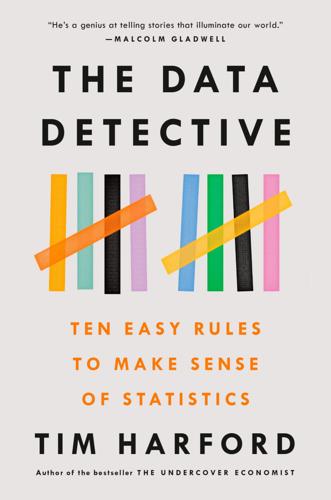
The Data Detective: Ten Easy Rules to Make Sense of Statistics
by
Tim Harford
Published 2 Feb 2021
But it’s far from clear that this is in the public interest. Why shouldn’t everyone, on all sides of the debate, get access to the numbers at the same time, once they’re ready? (There is a compromise position: ministers could receive the statistics thirty minutes in advance and sit alone, without access to a cell phone, to compose a response. Quite apart from being pleasingly like sending powerful people back to sit exams, this is how journalists are sometimes given sensitive official releases. We cope. I was told a story about a Canadian statistician explaining this approach at an international gathering of colleagues.

No Ordinary Disruption: The Four Global Forces Breaking All the Trends
by
Richard Dobbs
and
James Manyika
Published 12 May 2015
Technology offers the promise of economic progress for billions in emerging economies at a speed that would have been unimaginable without the mobile Internet. Barely twenty years ago, less than 3 percent of the world’s population had a mobile phone and less than 1 percent were on the Internet.13 Today, two-thirds of the world’s population has access to a mobile phone and one-third of all humans are able to communicate on the Internet.14 Technology allows businesses to start and gain scale with stunning speed while using little capital, as WhatsApp did. Entrepreneurs and startups now frequently enjoy advantages over large, established businesses. The furious pace of technological adoption and innovation is shortening the lifecycle of companies and forcing executives to make decisions and commit resources much more quickly.
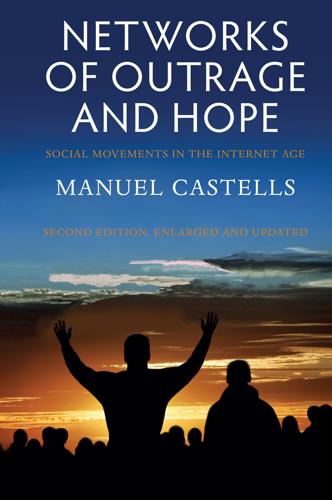
Networks of Outrage and Hope: Social Movements in the Internet Age
by
Manuel Castells
Published 19 Aug 2012
According to the study on information flows in the Arab revolutions conducted by Lotan et al. (2011: 1389), “bloggers played an important role in surfacing and disseminating news from Tunisia, as they had a substantially higher likelihood to engage their audience to participate, compared with any other actor type.” Given the role of the Internet in spreading and coordinating the revolt, it is significant to point out that Tunisia has one of the highest rates of Internet and mobile phone penetration in the Arab world. In November 2010, 67 percent of the urban population had access to a mobile phone, and 37 percent were connected to the Internet. In early 2011, 20 percent of Internet users were on Facebook, a percentage that is two times higher than in Morocco, three times higher than in Egypt, five times higher than in Algeria or Libya, and twenty times higher than in Yemen. Furthermore, the proportion of Internet users among the urban population and particularly among the urban youth was much higher.

The Second Machine Age: Work, Progress, and Prosperity in a Time of Brilliant Technologies
by
Erik Brynjolfsson
and
Andrew McAfee
Published 20 Jan 2014
In 2000, for example, there were approximately seven hundred million mobile phone subscriptions in the world, fewer than 30 percent of which were in developing countries.9 By 2012 there were more than six billion subscriptions, over 75 percent of which were in the developing world. The World Bank estimates that three-quarters of the people on the planet now have access to a mobile phone, and that in some countries mobile telephony is more widespread than electricity or clean water. The first mobile phones bought and sold in the developing world were capable of little more than voice calls and text messages, yet even these simple devices could make a significant difference.

The Blue Sweater: Bridging the Gap Between Rich and Poor in an Interconnected World
by
Jacqueline Novogratz
Published 15 Feb 2009
KENNEDY Thirty summers have passed since I gave away the blue sweater that ended up on a little Rwandan boy. Since then, the world has greatly changed. The boy I encountered had never seen a television show, made a telephone call, or taken a photograph, whereas his counterpart today, an urban youth wearing secondhand clothes in Kigali, is likely to have access to a cell phone and the Internet. As for my counterpart, today’s 20-something professional working in Kigali won’t feel the isolation I did; she is likely to e-mail and call her friends on Skype at least once a day and check her local newspaper on the Internet to learn about the goings-on at home. We have the tools to know one another and the resources to create a future in which every human being, rich or poor, has a real chance to pursue a life of greater purpose.

Digital Disconnect: How Capitalism Is Turning the Internet Against Democracy
by
Robert W. McChesney
Published 5 Mar 2013
In Africa, mobile telephone penetration has gone from 2 percent in 2000 to 28 percent in 2009 to an expected 70 percent in 2013.9 By 2020, according to IMS Research, there will be roughly 22 billion devices connected to the Internet and communicating online.10 By 2012 three quarters of the world population already had access to a mobile phone.11 “Mobile communication,” a 2012 World Bank report stated, “has arguably had a bigger impact on humankind in a shorter period than any other invention in human history.”12 This only begins to convey the extent of the changes being wrought. The Internet is the culmination of nearly two centuries of electronic developments in communication, from the telegraph, photography, telephony, and recording to cinema, radio, television, and finally satellites and computers.
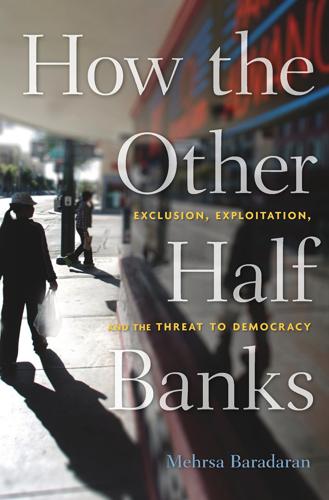
How the Other Half Banks: Exclusion, Exploitation, and the Threat to Democracy
by
Mehrsa Baradaran
Published 5 Oct 2015
Danielle Douglas-Gabriel, “How Wal-Mart and Google Could Steal Young Customers from Traditional Banks,” Washington Post, May 27, 2014, accessed March 15, 2015, www.washingtonpost.com/blogs/wonkblog/wp/2014/05/27/how-wal-mart-and-google-could-steal-young-customers-from-traditional-banks/. 77. “Why Does Kenya Lead the World in Mobile Money?,” Economist, May 27, 2013, accessed March 15, 2015, www.economist.com/blogs/economist-explains/2013/05/economist-explains-18. 78. “[Sixty-nine] percent of the unbanked … [and] 88 percent of the underbanked have access to a mobile phone … 39 percent of underbanked consumers have used mobile banking in the past 12 months.” Federal Reserve Board of Governors, “Consumers and Mobile Financial Services 2014,” March 2014: 2, accessed March 15, 2015, www.federalreserve.gov/econresdata/consumers-and-mobile-financial-services-report-201403.pdf. 79.
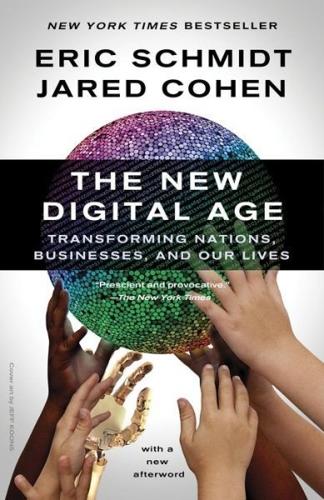
The New Digital Age: Transforming Nations, Businesses, and Our Lives
by
Eric Schmidt
and
Jared Cohen
Published 22 Apr 2013
In places where basic needs are poorly met by the government, or in insecure areas, basic digital technologies like mobile phones will offer safe and inexpensive options for families looking to educate their children. A child who cannot attend school due to distance, lack of security or school fees will have a lifeline to the world of learning if she has access to a mobile phone. Even for those children without access to data plans or the mobile web, basic mobile services, like text messages and IVR (interactive voice response, a form of voice-recognition technology), can provide educational outlets. Loading tablets and mobile phones with high-quality education applications and entertainment content before they are sold will ensure that the “bandwidth poor,” who lack reliable connectivity, will still benefit from access to these devices.

American Girls: Social Media and the Secret Lives of Teenagers
by
Nancy Jo Sales
Published 23 Feb 2016
When pressed, many of these same adults will admit that they’re checking their social media quite often, too. We’ve all become tethered to our mobile devices in ways we never would have imagined possible just a few years ago. But of all groups of Americans, teenage girls are in fact the number one users of social media. In 2015, 88 percent of American teens ages thirteen to seventeen had access to a mobile phone, and 73 percent had smartphones, according to the Pew Research Center. Ninety-two percent were going online from a mobile device daily, and 24 percent were online “almost constantly.” Girls ages thirteen to seventeen are slightly more likely than boys to have access to a smartphone, computer, or tablet; and “teenage girls use social media sites and platforms—particularly visually-oriented ones—for sharing more than their male counterparts do,” according to Pew.

The Future of Money: How the Digital Revolution Is Transforming Currencies and Finance
by
Eswar S. Prasad
Published 27 Sep 2021
This subsection draws on Lawrence H. White, “The World’s First Central Bank Electronic Money Has Come—and Gone: Ecuador, 2014–2018,” CATO Institute (blog), April 2, 2018, https://www.cato.org/blog/worlds-first-central-bank-electronic-money-has-come-gone-ecuador-2014-2018. It is estimated that 97 percent of Ecuadorians had access to a mobile phone—see “Sistema de Dinero Electrónico, Un Medio de Pago Al Alcance de Todos,” Centro de Estudios Monetarios Latinoamericanos, https://www.cemla.org/PDF/boletin/PUB_BOL_LX04-02.pdf, pp. 2, 256. For more on the Red Financiera Rural initiative, see “The Advance of Mobile Banking in Ecuador,” SEEP Network, https://seepnetwork.org/files/galleries/1365_SEEP_spotlight-financial_inclusion_leaders_RFR3_English_WEB.pdf.

Enlightenment Now: The Case for Reason, Science, Humanism, and Progress
by
Steven Pinker
Published 13 Feb 2018
, or the sinking feeling of the rent money evaporating as a pleasant conversation unfolded. “Only connect,” advised E. M. Forster, and electronic technology is allowing us to connect as never before. Today, almost half of the world’s population has Internet access, and three-quarters have access to a mobile phone. The marginal cost of a long-distance conversation is essentially zero, and the conversants can now see as well as hear each other. And speaking of seeing, the plunging cost of photography is another gift to the richness of experience. In past eras people had only a mental image to remind them of a family member, living or dead.
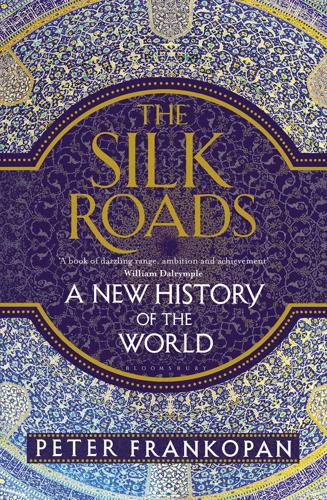
The Silk Roads: A New History of the World
by
Peter Frankopan
Published 26 Aug 2015
These languages helped unlock a world waiting to be discovered, or, as I soon realised, to be rediscovered by those of us in the west. Today, much attention is devoted to assessing the likely impact of rapid economic growth in China, where demand for luxury goods is forecast to quadruple in the next decade, or to considering social change in India, where more people have access to a mobile phone than to a flushing toilet.3 But neither offers the best vantage point to view the world’s past and its present. In fact, for millennia, it was the region lying between east and west, linking Europe with the Pacific Ocean, that was the axis on which the globe spun. The halfway point between east and west, running broadly from the eastern shores of the Mediterranean and the Black Sea to the Himalayas, might seem an unpromising position from which to assess the world.